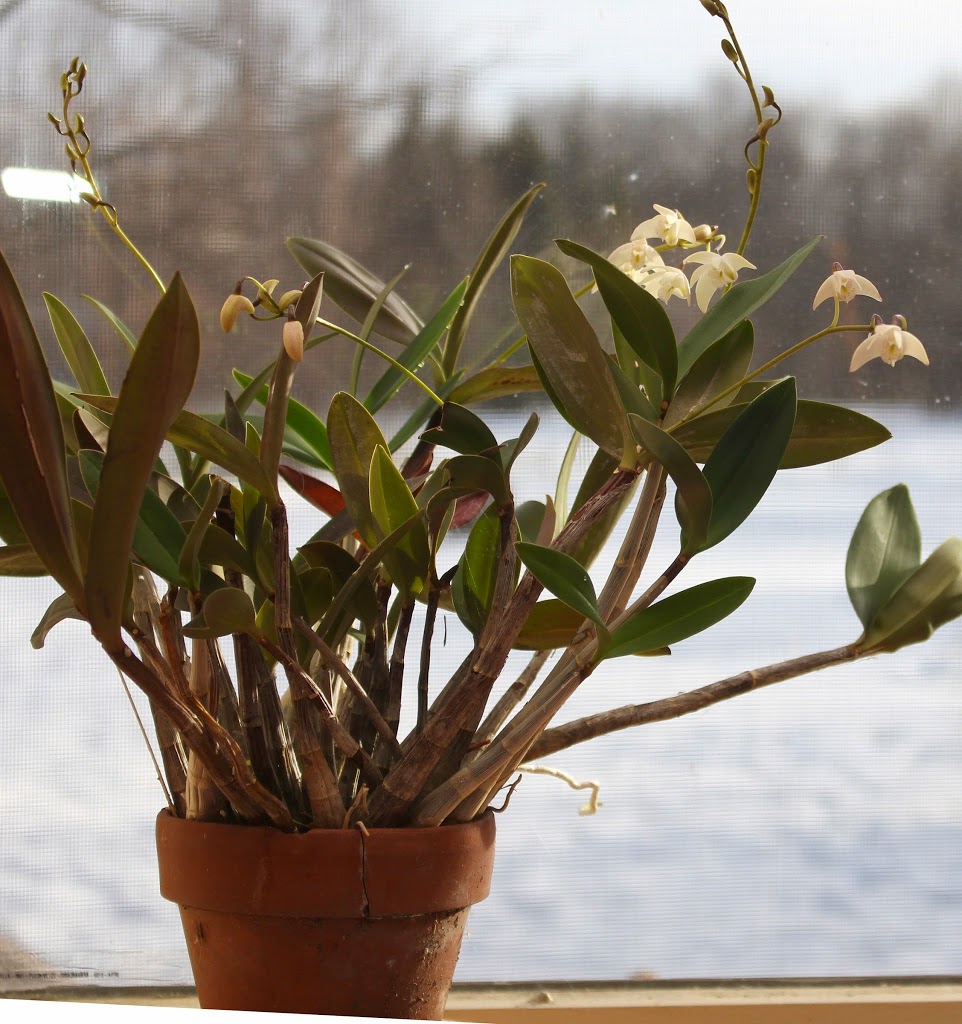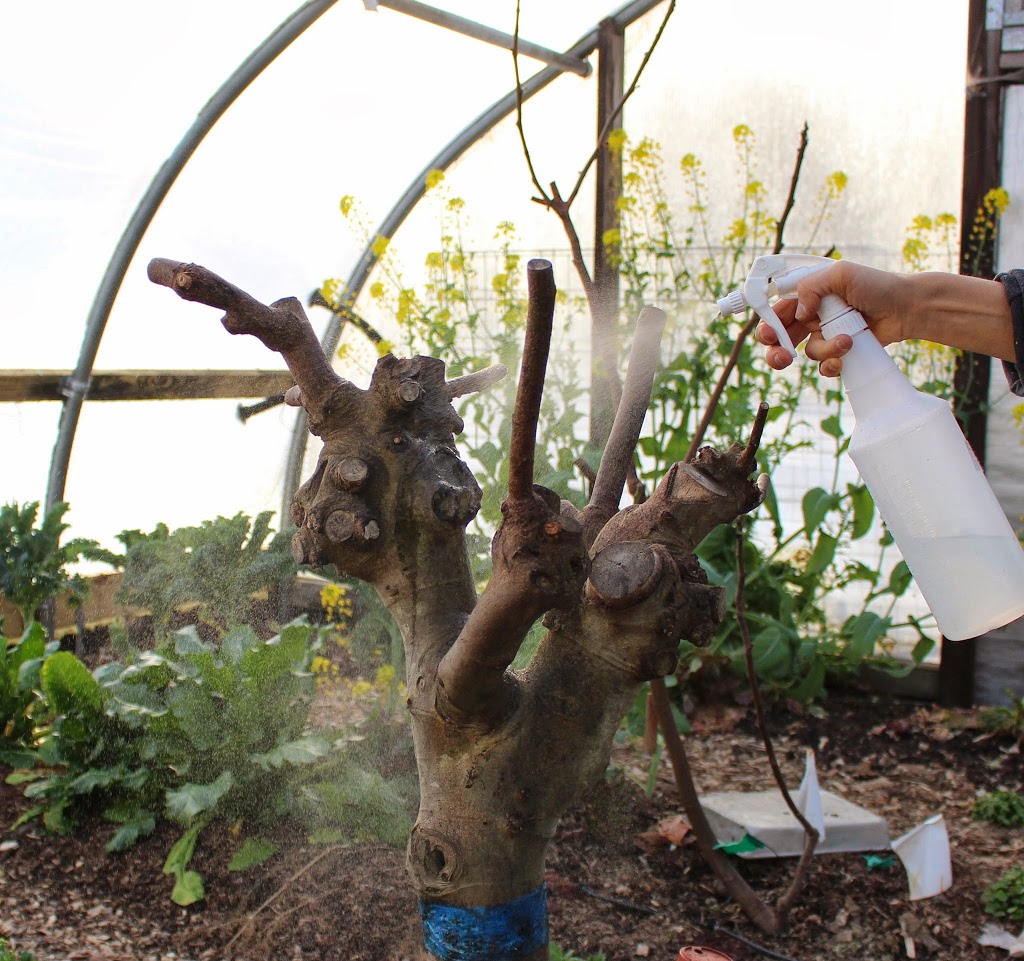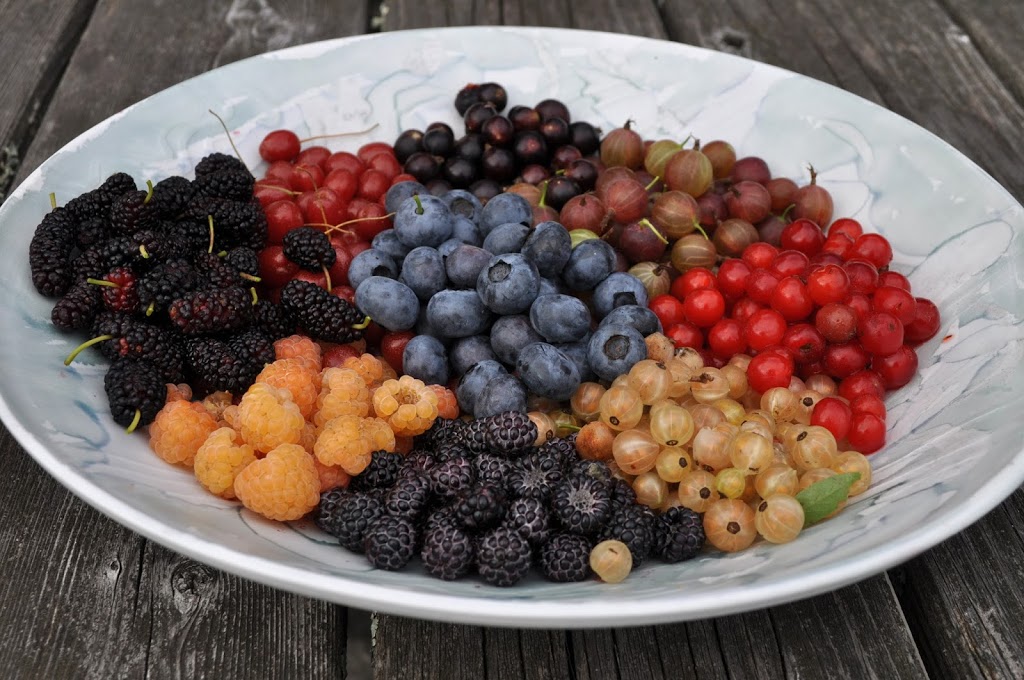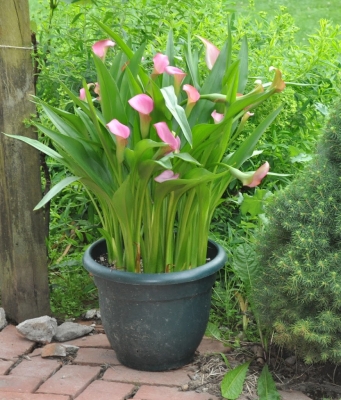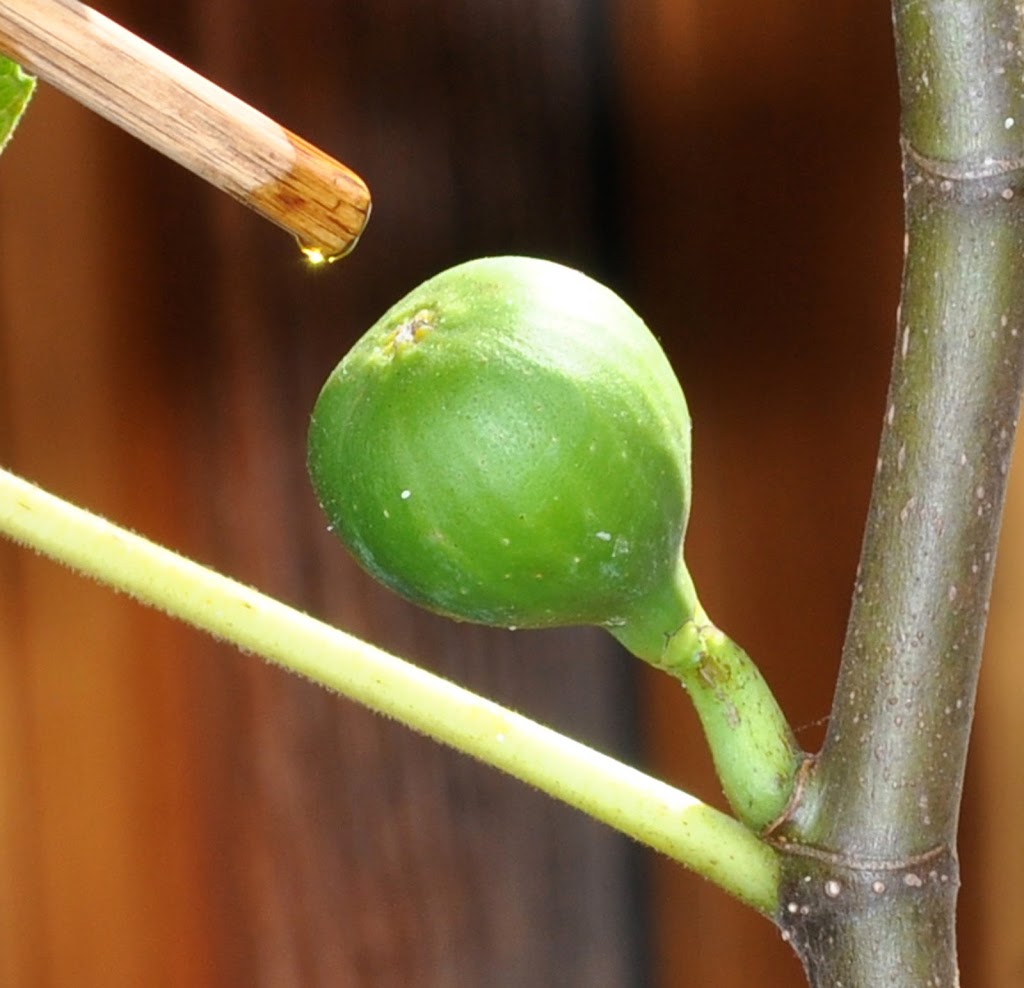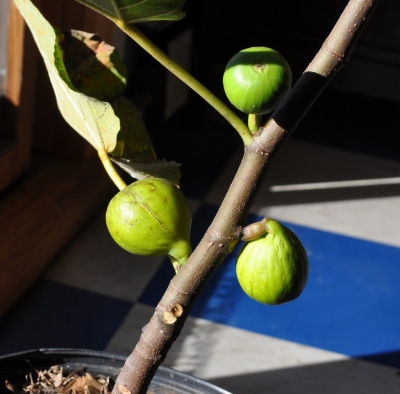Let’s see, what’s on my plate for today? No, not what I’m planning to do, but what’s on my plate, literally. I have gumis, figs, Nanking cherries, highbush and lowbush blueberries, black raspberries, red raspberries, black currants, red currants, tart cherries, and mulberries. And what a tasty lot they are, and for
so little effort. All that’s needed, for everything except the gumis and Nanking cherries, is pruning and mulching. The gumis and Nanking cherries, both with their branches bowing to the ground under the load of red fruits, need no care at all!
Gumis (Elaeagnus multiflora) are particularly abundant this year, for the first time ever. Either the bushes have grown large enough to pump out a large crop, or birds have been distracted by all the cicadas into leaving the gumis alone. Letting the fruits, which are flecked gold and the size of small cherries, hang on the bush until dead ripe gives time for the sprightly, sweet flavor to develop and the astringency to fade. It’s also a nice ornamental shrub, with leaves silvery on one side that are a good foil for the colorful fruits. Backtracking to a few weeks ago to another asset of this plant, sweet perfume from the flowers was drifting all over the yard.
The early fig crop, known as the breba crop, is also relatively abundant. One of my figs, mislabeled Green Ischia, bears fruit on new, growing shoots as
well as on last year’s stems. The breba crop, ripening earlier, develops on last year’s stems, a few of which I saved on the large tree in the greenhouse. The rest of the plant, like my other figs, which bear only on new, growing shoots, gets lopped back each autumn to 3 or 4 feet high. This crop, and for some figs this is the only crop, is called the main crop.
So right now Green Ischia has a breba crop ripening on the 2 or 3 stems I left from last year, and a main crop developing which will begin ripening around the end of August, along with the main crop on the other varieties of figs. These crops can be harvested from plants in pots or, as is the case for my Green Ischia, plants growing in the ground in a minimally heated greenhouse. The advantage of in-ground in the greenhouse is larger plants and, hence, more figs. Some people spend their money on in-ground pools; I spent my money on a greenhouse for in-ground figs.
The other fruits on my plate, with the exception of Nanking cherries, are familiar to most people. Many visitors have been sampling the Nanking cherries, and all except one were wowed by the fine flavor. The fruits are somewhat small and soft, but, in addition to good flavor, earn their keep for their fecundity, their not needing any care, and for white blossoms that drench the stems in spring.
——————————————
Soft pink, tubular swirls of calla lily (Zantedeschia spp.) flowers are like having a three dimensional Georgia O’Keefe painting right on my terrace. No, four dimensional, the added dimension being time, because the plants change day by day.
Calla lilies are also easy to grow. Put the bulbs in a pot, and water; enjoy
flowers in summer; bring the pot indoors before the weather plummets below freezing in autumn; store in cool basement through winter; bring out again in late spring.
My main problem with growing calla lilies is that I’d like more of them than the one pot now sitting on my terrace. New plants are thankfully easy to come by, besides being gifted them, in this case from my friend Sara. Beneath the ground, the plants spread by rhizomes, which are specialized, underground stems such as those found beneath ginger, banana, lowbush blueberry, and bamboo plants. Rhizomes have a segmented appearance, just like stems, with each each node sprouting feeder roots as well as an aboveground shoot. Come autumn or late winter, I’ll cut up the rhizomes and multiply my holdings.
—————————————–
So what’s hard to grow around here? Apples. If you wanted to know the most difficult fruit crop east of the Rocky Mountains, that’s it. Apples.
The season started out perfectly, with good fruit set. A few well-timed sprays kept the snout-nosed beetle, plum curculio, at bay, as well as codling moth (the “worm” in an apple) and the fungus responsible for apple scab, whose effect is just what it sound like. But problems don’t end there.
As curculio exits stage left, apple maggot moves in stage right (but can be controlled by trapping) and codling moth stays around. Orange blemishes from cedar-apple rust pock susceptible varieties and scab, despite the sprays, also becomes evident, the result of our incessant wet weather. Fruits are cracking from changes in soil moisture. And still in the offing are summer diseases — black rot, white rot, and bitter rot — that can ruin any fruit that survives other scourges.
I can hear my mulberries, Nanking cherries, black raspberries, and other no-care fruits chuckling at me for all the care I lavish on my apples, to little avail.
——————————————
Dateline July 4: Cicadas are gone. Yeah!



